The landscape of the Ciociaria is characterized by walled cities, medieval villages, ancient baths, low-lying hills and mountains. It is located a short distance from Rome, in the province of Frosinone, in a strategic location between Rome and Naples.
A land that can stir up love, interest and emotion, generously offering majestic polygonal city walls, Roman arches, churches and abbeys, unique medieval villages, picturesque landscapes and irrefutably, a kitchen that still smacks of "antique".
The name 'Ciociaria' derives from the dissemination of ‘ciocie’, the typical ciociarian footwear used by local shepherds, made with a thick rectangular sole of leather connected at the tip, in the part above the foot. The processing is achieved by wetting the sole and working by hand, shaping it around a piece of iron.
The sole is supported by leather strings which, passing through the holes in the rim, are wrapped or twisted 13 times around the leg covered by a calzetto (knee high sock) made from a piece of cloth, in honour of St. Antony from Padua.
The ciocia is not only used in Ciociaria but also in some other Italian regions including Abruzzo, Molise, Calabria and outside Italy in Albania, Greece and Macedonia. From this footwear comes the name "ciociaro" which appears for the first time in 1600 in a papal document.
The Ciociarian Table
The traditional ciociarian cuisine looks like a precious find only just uncovered from the dust of centuries and contains a mosaic of flavours and peculiarities of the highest order and unexpected variety.
One of the most well-known dishes is pasta made by hand, cut into thin slices called "fini fini", seasoned with meat sauce or simply tomato. Among the first courses are no less gnocchi, cannelloni and the famous ‘timbale ciociaro’ as called "to Boniface VIII", but also soups, such as pasta and beans, pasta and potatoes, pasta and chick peas, prepared according to the culinary tradition of Ciociaria with unique tastes.
For main courses sheep, goat and poultry are exalted in ciociarian kitchens. In particular, the dairy goat is a typical dish of the Easter holidays for the excellent quality of its tender meat. Even good quality lamb, especially "gelded" rams, grilled, represents a typical and tasty dish.
The more fortunate in this land will be able to drop their preconceptions on sheep meat. In some places, it is cooked in a way to be a worthy example of a degustation and a special meal. Poultry has always represented the true dietary source of meat of these people, its various preparations "in the manner of once upon a time", make this meat noble and tasty.
It is not uncommon to find even in the local restaurants and free-range chickens with substantial and tasty meat. Usually, these dishes are accompanied by greens and vegetables, creating dishes like chicken or rabbit with peppers, sausage with broccoli, lamb with baked potatoes. As for the desserts, although they are not particularly elaborate, they have a particularly pleasant taste.
Fettuccine Dough
The basis for this classic pastry is simple: flour and eggs. Compared to the Emilian tradition that the use of wheat flour only, the Ciociarians add twenty percent of durum wheat flour, which improves its resistance in cooking without compromising the typical 'softness'. The recipes provide a pound of flour for each medium-sized egg.
It is worth noting that the best results are obtained with a rather hard dough, though it is somewhat difficult to work with. The first few times, therefore, it is advisable to settle for a softer dough, quick to knead and easy to pull. You just take care to often sprinkle with a little 'flour, to make sure it does not stick.
MEAT CIOCIARIA
Ciociarian Lamb
In the Ciociaria countryside the breeding of sheep for red meat is very common, so at the table most of the dishes are based on lamb, with animal age between twenty days and one month and commonly known in Rome and Lazio with the name Abbacchio.
The dishes made are not only based on "lamb chops" (ribs and pieces of lamb cooked on the bone that the Romans ate with their hands, hot enough to burn their fingers), but also on poorer dishes like lamb offal, the sweetbreads with prosciutto, and pajata made with the intestines.
Among the recipes must be remembered the brodettato lamb, cooked in a pan with prosciutto, herbs, white wine and enriched with a sauce made with egg yolks, parsley, marjoram and lemon juice, but also the one which produces ‘alla cacciatora’ with anchovies but not tomato.
Monte San Biagio Sausage
Monte San Biagio is a town in the province of Latina that is famous for its sausage that is crafted according to the ancient traditions of Ciociaria. Its not always uniform shape, as it is derived from processing by hand.
The sausages can be sweet or spicy but always have a very intense flavour and are excellent as an appetizer.
Salami and Prosciutto
 The salamis of Ciociaria are a real treat for the palate thanks to the climate particularly suitable for seasoning. They are made with pure pork meat of top quality, enhanced by skilful mix of spices and sausage seasonings, and processed with great care, producing typical products of Italian charcuterie tradition.
The salamis of Ciociaria are a real treat for the palate thanks to the climate particularly suitable for seasoning. They are made with pure pork meat of top quality, enhanced by skilful mix of spices and sausage seasonings, and processed with great care, producing typical products of Italian charcuterie tradition.
The typical Ciociaria ham is something very special. Sweet and tasty, wholesome and nutritionally balanced and ha
s a minimum aging between 14 to 18 months.
Bacon (Pancetta)
The bacon is a product particularly appreciated by gourmets and from lovers of the kitchen, and especially those who prefer country flavours. It is salted and flavoured with spices, according to ancient recipes of cuisine from here that maintains the old flavours.
Ciociaria bacon is free of dyes and can be consumed both as sliced for tasty grills and ‘amatriciana’.
Porchetta (Roasted Pork)
Porchetta from Ciociaria is of the highest gastronomic quality, the result of passion and experience. It is stuffed with spices and natural flavourings creating a scented product and with a highly-refined taste. It is cooked with dry ovens that ensure the delicate fragrance.
CHEESES
Morolo Donut
The Morolo donut is the result of dairy tradition of the town of Morolo on the Lepini slopes. The artisanal cheese production dates back to 1933 with the dairy farm of Mr Pietro Scarchilli.
It is a smoked semi-hard spun paste cheese that is presented in the shape of donut. It has a smoky yellow exterior color and a light yellow color inside. Its flavour is sweet.
Pecorino di Ferentino
Pecorino di Ferentino is made by hand using traditional old ancient methods. It has been appreciated since the imperial era, when the area housed the Roman nobility, attracted by the great food, the good climate and sulphur from sour-water springs.
Pecorino di Picinisco
The pecorino of Picinisco is a product made mainly at the familial herding level, where specific processing and storage premises for this cheese do not exist. The curing and storage occur in fresh and ventilated cellars of houses, recline the cheese forms on wooden planks in wide slats.
The Marzolina Goat Cheese
The Marzolina is a typical cheese of Ciociaria, from the Villa Santo Stefano area and named after the month of March as it is produced in the spring.
It is produced in the country and is derived from an old process of the first farmers of the mountain, and even now it is strictly produced in a traditional way.
Ricotta Romana (DOP)
The Roman ricotta cheese is a dairy product that stands out for its full-bodied, sweet flavour with a hint of acidity and for the consistency of its grainy and dense texture.
It is obtained exclusively from whole sheep whey used for sheep's milk cheese.
Mozzarella di Bufala of Amaseno
The Amaseno Valley produces excellent cheese that can stand the test of the most demanding palates. The buffalo mozzarella is a soft cheese, raw and spun, fat, fast-ripening, made from whole buffalo milk.
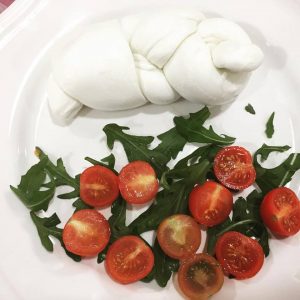
As early as the twelfth century in the monastery of San Lorenzo di Capua they were producing buffalo milk cheese, in particular ricotta and provatura (similar to provolone) that were offered to visitors.
Starting from the 1600s the "bufalare" appeared that were circular buildings with a central fireplace where buffalo milk was worked (getting mozzarella, ricotta, provatura).
The paste should be milky white, free of holes, light sheets, elastic in the first hour and then gradually softer; not very soluble, when cut it must issue a little white serum with scent of lactic fermentation. The smell is of milk, taste should be sweet-sour, slightly salty, with flavours of acidic milk and herbs.
FROM THE WOODS
The Campoli Appennino Truffle
Campoli Appennino is a picturesque village located between the mountains and snowy peaks of the Lazio Apennines, perched on the border of the National Park of Abruzzo surrounded by unspoiled nature. The inhabitants, have strong traditional values, are friendly and hospitable, ready to smile.
The territories are rich in limestone and naturally suited to the formation and growth of the most valuable species of truffles. In the valley is the prized white, in the hills the black, aestivum and more.
Each year there are two celebrations of the truffle: the 3rd weekend in June (Black Truffle Festival) and the 3rd weekend of November (the White Truffle Festival) with an average attendance of over 15,000 visitors.
Mushrooms
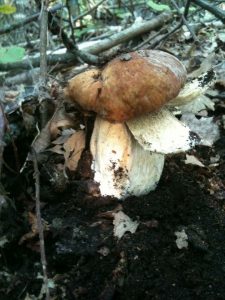
Mushrooms excel in appetizers, main courses, and are superb with meats. Often, they are found in sauces with game, along with truffles.
Mushrooms with garlic and parsley are a classic dish of Ciociarian cuisine. In the winter months, we can have them with oil or other condiments, perhaps in a tasty sauce with polenta.
VEGETABLES AND FRUITS
The Broccoli Roccasecca
The ‘friarielli’ are inflorescences developed on the turnip top and are a typical dish of the Neapolitan and Roman kitchens (in Rome and the Ciociaria they are called broccoli).
They are known by other names: rapini, broccoli, broccoletti and turnip tops that are used in other areas of Italy, Galicia and Portugal (grelos) and in Chinese cuisine.
In Ciociaria they are eaten, preferably, fried in oil, with garlic and pepper.
Olives from Gaeta
The Gaeta Olive distinguishes itself as a result of a slightly tapered shape, of blue colour, winey flavour, ‘amarostico’ with acetic shades, produced mainly in the area including Gaeta and neighbouring communities on sides of Aurunci Mountains in the province of Latina.
They are used to produce an excellent oil and especially olives in brine (locally olives with water) that are suitable for various uses in the kitchen and are among the ingredients used by the chefs from around the world.
This product, described by Virgil in the Aeneid, had its peak in 1400 due to farming abilities, the trade and navigation of the citizens of the then Duchy of Gaeta, who exported oil and olives from Gaeta throughout the Mediterranean, making it a highly-demanded food, for taste and their excellent quality.
Leonessa potatoes
The potato of Leonessa is a variety of potato from the area of Leonessa, in the province of Rieti. At one time it was much more widespread, but now the cultivation has been some reduced.
In the thirties, the most widely used variety was the "Berlin Round", now the most common varieties are the Désirée red skin with yellow flesh, the Agria white skin with yellow flesh and Marfona white smooth skin with yellow flesh.
Born with a modest ambition in 1990, the Potato Festival has gradually grown to become one of the most important events in the province of Rieti.
The festival sees a large turnout of visitors especially for its delicious dishes, like the famous gnocchi with sauce and truffles. Also, there is a ceremony for the largest potato and fireworks in honour of the Madonna di San Matteo.
Artichokes from Sezze
The best artichoke is undoubtedly the Roman type. In addition to having a pleasant taste, it is a healthy food. This product is widespread in Italy having been cultivated from a gradual selection from the thistle.
The Sezze Roman artichoke is among the most famous and delicious. The inhabitants of this Lazio town, the Sezzesi, still call the first and most tender fruits of the plant Cardini. Its typical fragrance, the softness of the "heart" and the tender petals make it appreciated on the tables of gourmets.
It is a healthy food that contains large amounts of iron and fibre and, thanks to cinarina (a polyphenol), aids digestion and has a slightly diuretic effect. The artichoke is therefore perfectly in line with the definition of the "Mediterranean diet", a well-known dietary pattern that is appreciated throughout the world.
Cornetto Peperone of Pontecorvo (DOP)
The cultivation of the ‘ox horn’ pepper (peperone) in Pontecorvo boasts old traditions (there are traces since 1700). It is grown not only in the territory of the municipality of Pontecorvo but also in the towns of Esperia, San Giorgio a Liri, Villa Saint Lucia, Piedimonte San Germano, Aquino, Castrocielo, Roccasecca and San Giovanni Incarico.
The Pontecorvo peperone is a horticultural plant belonging to the solanace family, genus Capsicum, ecotype "cornetto of Pontecorvo". It has red colour sometimes with green stripes; cylindrical-conical elongated shape with three characteristic points, the fruit has three lobes.
The pulp and the skin are thin, and the flavour is sweet. The peperone of Pontecorvo has a strong flavour, associated with a high digestibility and a higher content of potassium. Another peculiarity, certainly not of lesser importance, is the amount of skin that remains in the mouth at the end of mastication, being significantly lower compared to all the other products of the same kind.
These characteristics are closely related to the soil and climatic conditions of the area. The pepper is grown in deep soils that tend to be loose though with good clay content, and with the presence of limestone, so slightly alkaline to neutral reaction. The soils are permeable and well drained so as to allow a rapid disposal of excess water.
Cannellini Beans of Atina
The Atina cannellini beans are produced in Picinisco, Villa Latina, Atina, Casalattico, Casalvieri and Gallinaro. The Atina Cannellino bean is kidney-shaped, slightly elliptical and somewhat flattened.
Ciavattoni Beans of Vallepietra
The Ciavattone Bean is typical of Vallepietra valley. It is a bean of considerable proportions, with white and fleshy pulp, and even without spice it has its own unique tasty flavour. It is great for appetizers, steamed or as a side dish with meat stew or with gravy.
Every year Vallepietra, a village not far from Subiaco, holds the festival celebrating the Ciavattone bean, a name that derives from the typical shape. The old village and the nearby sanctuary of the Holy Trinity represent, together with the nature around them, an ideal opportunity to revive the body and soul.
OIL CIOCIARIA
Extra Virgin Olive Oil of Ciociaria
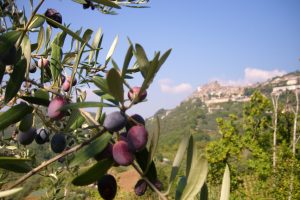
The extra virgin olive oil from the olive groves of Ciociaria is the basis of the traditional dishes. Many small towns are producers. In Ciociaria the olive varieties include Frantoio, Itrana, Leccino, Carboncella, Pendolino, etc. but Moraiolo remains the most suited cultivar, especially in the centre-south of the province, particularly around Boville Ernica, in which there are 9 olive crushers.
To the north of Ciociaria, there is a rarity: the so-called 'Rosciola' oil with a very characteristic and particular taste, which enhances all the foods it accompanies and gives an almost unique flavour. It is, unfortunately, a difficult cultivar to grow, delicate and less prevalent because of the care they require.
Ciera dei Colli (Monte San Giovanni Campano)
This oil is obtained by pressing the finest olives of Ciera varieties harvested at the onset of ripening and immediately cold pressed. It has an unmistakable aroma, low acidity which can range from 0.2 to 0.5% total organoleptic quality. This extra virgin olive oil comes from organic farms grown in a natural way without chemical treatments.
Its regular consumption lowers plasma cholesterol and raises HDL cholesterol useful for the body. It has a favourable influence on blood pressure and in the prevention of angina and myocardial infarction. It is a favourite of people who like healthy foods.
This is an excellent food used raw indispensable in cooked foods of the Mediterranean diet and in frying.
THE WINES
Cesanese Piglio
The Cantina Sociale Cesanese Piglio saw its birth in 1960 thanks to a group of growers whose goal was to create high quality wines. The production is around 350-400 thousand bottles per year, most major part being the Cesanese del Piglio wine. The company's goal is to introduce the indigenous grapes of Ciociaria to those seeking to make beverages in the area.
In 1973, the Cesanese del Piglio won the prestigious award of the DOC mark. This positive result was more valuable because in those days it was very difficult to sell red wines. The vineyard area has now reached 150 hectares and specialized publishers now rank it among the best national wine demonstrations even if market responses show greater recognition in foreign countries.
The wines have a ruby red colour tending to garnet with aging. The scent is delicate, characteristic of the base grape variety and the taste is soft, slightly bitter.
The wine is paired with typical dishes of Ciociaria, such as pie, potato gnocchi, polenta with sausages or pork ribs, lamb and sheep cutlets stewed.
Passerina Frusinate
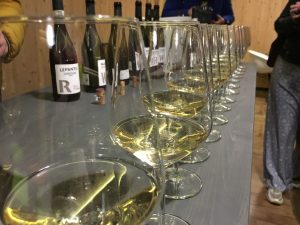
The Passerina vine has produced a much appreciated white wine, a dry wine of straw color, a wine that goes well with hearty dishes, one that should be served cool, "going down like a god"!
Recently there have been approaches to this vine trying to bring out the hidden aspects. The purpose we believe has been achieved with acacia barrels which have earned the wine almost an exotic style.
Grappa Cesanese Piglio
The first grappa has been made from pomace of Cesanese Piglio, in which we find all its most intense aromas and enhanced by a unique warmth and softness.
Semillon Sauvignon Merlot Cabernet of Atina
In the beautiful Val di Comino we find what at first glance would seem a "quirk": an abundance and distribution of French grape varieties Cabernet Sauvignon, Merlot and Semillon.
The Napoleonic troops settled in Terra del Lavoro for years after the battles of Naples and found that the valley, especially in the Atina area lent itself to this
type of vines, particularly when exposed to the sun, but with cool climate, with the mountains of Meta regulating those ‘northern’ temperatures.
Today the wines of Val Comino, with Cabernet at the head have become a beautiful reality. DOC recognition was only due!
The wines have intense red colour verging on garnet with aging, the scent is fruity and characteristic of the basic grape, it is aromatic, full-bodied, dry and sometimes herbaceous. The minimum alcohol content is 12 degrees and 12.5 for Reserve versions.
DESSERTS & SWEETS
Taralli
The Taralli bagels are shaped like a donut and have a taste in which the anise emerges as dominant flavour. We are dealing with a product of tradition which sees its highest consumption in the spring days, or better yet, during the Easter celebrations.
Anise, in fact, is a liqueur that was never missing from the homes of peasants, even among the poor, was the way to "elevate" the sweet to a higher dignity and that reputation given for a religious festival.
Scottolate Donuts
This is a product characterized by a more refined and careful cooking, which should make it a dry and light dessert, not "burnt".
It is one of the many variants of the confectionary taste, not very sweet, actually, so as not to look like a 'sweet’. Perhaps for this reason, the fragrance smells of bread and biscuit, of ones done at home.
Cherry Tart and Ricotta
This is a typical Lazio sweet, especially of the Frusinate area. For the preparation of this tart uses the products widespread in Ciociaria: sour cherry jam and ricotta.
Panfruffo Ciociaro
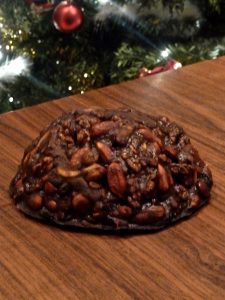
This typical dessert should be eaten at every opportunity as a sweet, for breakfast or as dessert after a meal or as a dessert accompanied by great wines. The peculiarity is that tasting it, you feel a very special and very pleasant aftertaste that makes you want to consume more and more.
It consists of: butter, sugar, raisins, flour, sour cherries, almonds, eggs, molasses or honey and rum.
Giglietto
Today the Giglietto is shaped like a disc with a flat side, on the other side slightly domed. But our grandmothers made it lily-shaped.
Tozzetti
Commonly prepared at home and eaten throughout the year. The Tozzetti biscuits are highly appreciated both by children and adults and have great success in the festive season.
Ciambelline with Wine
This dessert consists of crisp and crumbly dough prepared from fragrant anise seeds, sweetened with good wine and covered with grains of sugar: these are the very traditional wine donuts.
They are found throughout the year in the ovens of the city, lighter colour if mixed with white wine, a little darker if in its place a good red is used.






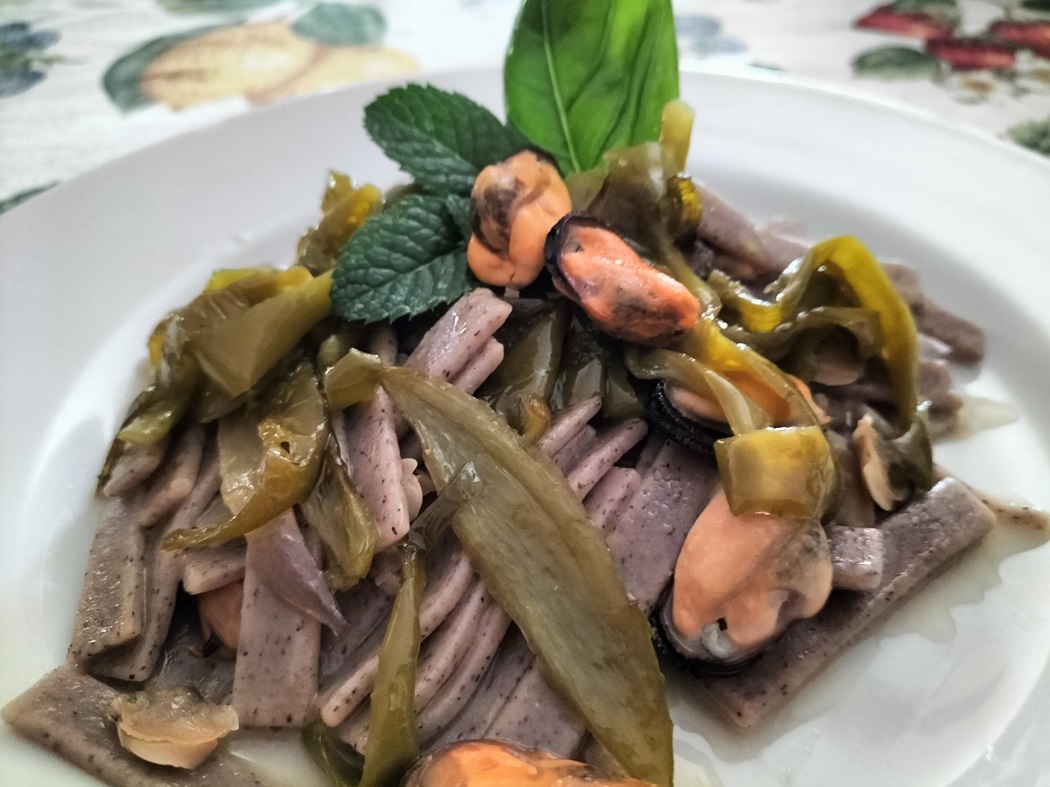

Follow us